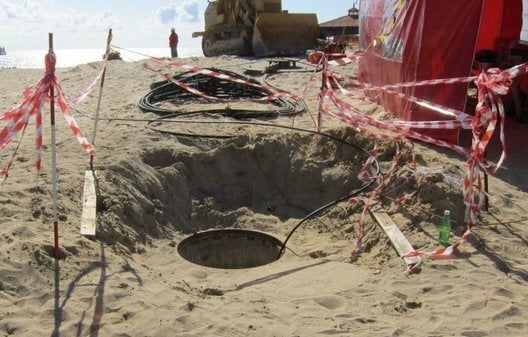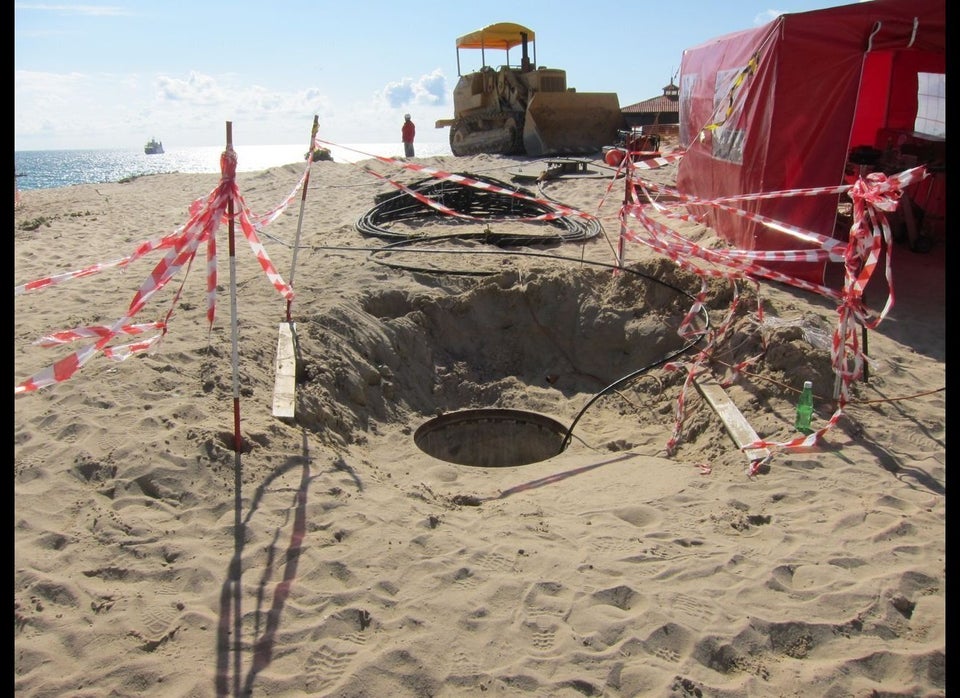
Andrew Blum hadn't really thought about the subject for his new book, "Tubes," until a squirrel chewed through the wires at his Brooklyn apartment and his Wi-Fi went out. The incident served as a reminder that the Internet isn't just floating in space. All of our data resides somewhere, enclosed in something, and Blum, like many of us, knew very little about where our Internet actually lives.
Blum, who writes frequently for Wired about architecture, infrastructure and design, toured around the world for his research, to one of Facebook's multi-million dollar housing facilities, to a 10,000-mile undersea cable, and old run-down buildings that have since been "overrun by machines."
He named his book after Senator Ted Stevens' 2006 statement that the Internet was merely "a series of tubes," yet what Blum found proved to be much more complex, and more tangible, than he'd expected.
Blum spoke to HuffPost about some of his discoveries.
Besides the squirrel incident, what got you interested in this idea?
Basically at around the same time, there was this moment of stimulus funding for the economy, and one piece of that funding was for broadband. I went to the kickoff meeting for the broadband stimulus funding and it was this packed auditorium of thousands of people who owned pieces of the Internet. It was so interesting -- all these guys from Virginia who owned rural ISPs, Wi-Fi people from Seattle. It was this room full of people hoping for federal money to build new pieces of the Internet.
Were they willing to talk to you about it?
They were more than happy to talk about pieces they owned. There's certainly a seamy underbelly, or a soft underbelly, let's say, but people would open doors to you.
You've written a lot about art and architecture. From that perspective, what was most interesting to you about these buildings where data is stored?
I came at this thinking about how good architecture always expresses ideals. And I was trying to understand what ideals the data centers were expressing. A lot of them look like filled up concrete buildings that would embarrass a Wal-mart, but the newer ones, most especially Facebook's data center [in North Carolina] and Telehouse West in London -- they really seem to be described as architecture and have a lot of pride in being what they are.
Watch a flyover of the new Facebook facility:
Facebook spent 16 months originally breaking ground on their newest data-center in North Carolina, and according to Wired: 2,000 people worked more than 1.2 million hours to make it happen.
What building that you visited in your travels was your personal favorite?
This building in Milwaukee was pretty amazing -- it's the place where most of Wisconsin gets its Internet from. This was the seamy underbelly part, absolutely. This place looked like something out of a film noir; glass doors, detective movie, this really sort of down and out building populated by immigration lawyers, dentists, but now it's colonized more and more by networks. They'd been taken over by the machines.
I kind of became obsessed with those undersea cables you mention in your book. Did you get to see one of those things first hand?
I did not go under water, but I did watch the cable come up on the beach. This new cable called the WAX cable, goes from Lisbon down the west coast of Africa. I watched the first moment where they started it from this manhole on the beach, laying cable on the ocean floor.
How does that cable not constantly break?
It does sometimes. Closer to shore the cable is armored with steel casing and it's buried for the first hundred yards. Then the cable gets thinner and thinner. At the deepest points it's very thin cable. But basically it's built in systems, in pairs. Once the country has one cable and it's built a business, they always want a second cable as a backup. They can get broken by a dragging anchor or underwater landslide -- when it does get broken it takes days or weeks to fix.
How do they fix it?
A long grappling hook. They fuse them back together, throw them back down.
What struck you most about the larger companies -- the Apple, Facebook and Googles of the world -- and where they house their data?
They were certainly the most finely tuned, most efficient, most conceived holistically. There were two poles -- one is you want to be as close to the centers of the Internet as possible. The places where networks meet, where bandwidth can meet, where most users are. And the other pole is finding data centers that were most efficient to operate. In the U.S. that seems to mostly mean Oregon and North Carolina.
Why those places?
The power is cheap and the air is cool. They need to keep the servers cool and use outside air as much as possible.
Did all of the companies you met with cooperate with your research or were some less willing to let you see their facilities?There was a huge variation in how much different companies wanted to tell their story. The most extreme example of that was Google. Not only did they not want to share anything about their data centers or let me inside, but they treated my desire to know with a kind of pat on the head. "You won't understand this anyway, so we won't tell you." And that struck me as an amazing hypocrisy given what that company stands for.Did they give you any reason for being so secretive?
Their party line has always been that their infrastructure is proprietary. Their data centers are highly secure in order to protect your data. However, among the dozens of others I visited, [Google] was by far the outlier in saying, "This is not something you have any right to know about." That's not very comforting, given how major a company they are.
I hold them to a different standard. You give Apple $200, they give you an iPhone. You give Google all your search queries, your email, your instant messages, and they give you their service. But it's still not clear -- that exchange is vague. We don't fully understand the ramifications of that exchange yet. I knew something was [off] when I was at their headquarters eating my organic salmon and peanut butter cups, and a guy next to me was wearing a t-shirt that said, "People who think they know everything are annoying to those of us who actually do."Andrew Blum's "Tubes" is available now.Check out some of the photos he took of the undersea cable:
